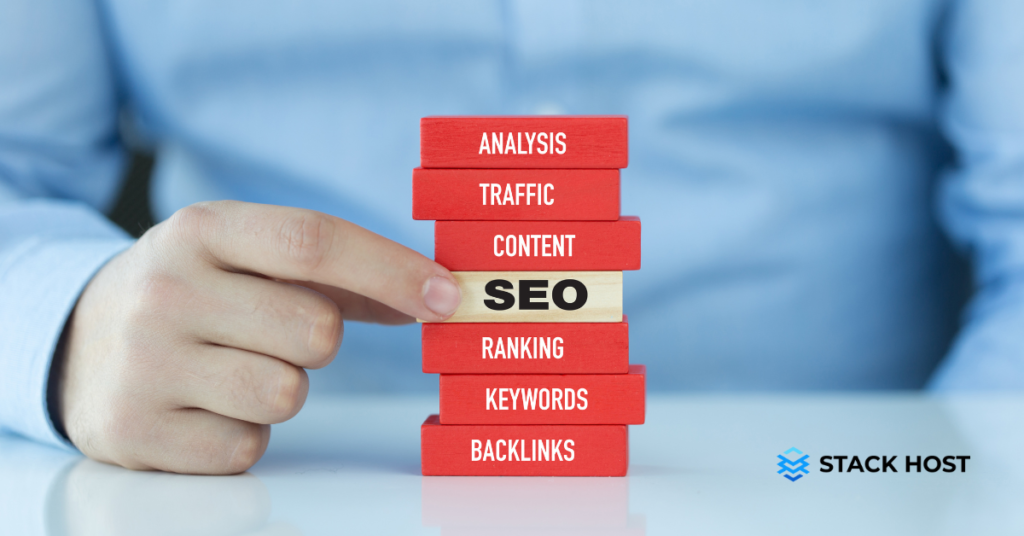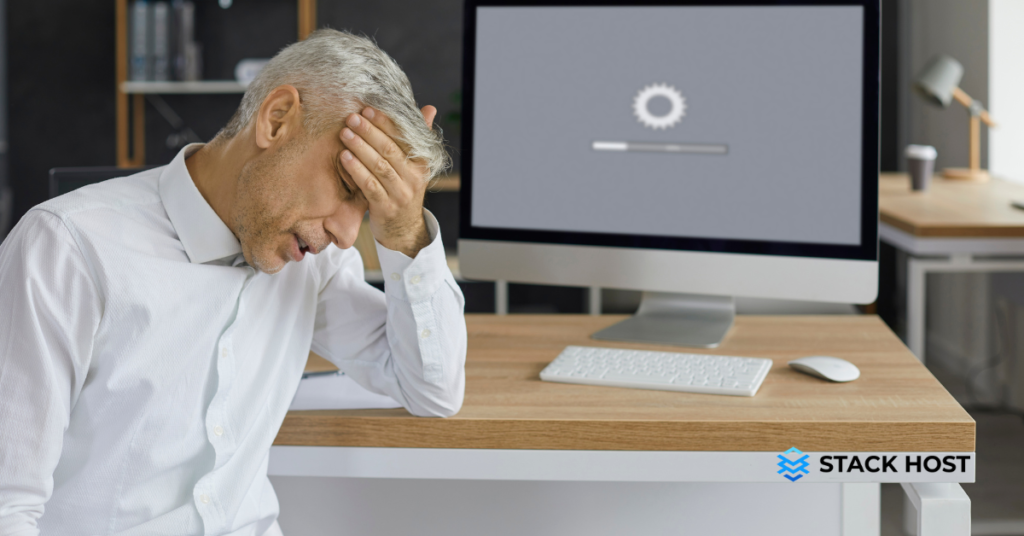
How to Optimize Your Google Business Page Strategy
Google is the world’s leading search engine, and, as such, businesses need to have an optimized Google business page. In this article,
Share this article:
Google has become the primary source of Internet users for most businesses. According to a recent survey, 90% of consumers begin their search for products or services on Google. In addition, about 68% of users type a local business into Google to find its website before visiting its location. This means that your website plays a significant role in how many people know about your business and how many times potential customers visit your site.
Your website is your virtual storefront and must rank high on Google to get more traffic. If you’ve noticed a sudden decrease in the ranking of your website, then you probably have some maintenance to do.
Here are 9 reasons why your website stopped ranking on Google & how to fix them.

If you’re not designing your website to be responsive, it may not appear in search engine results for mobile users. Google has been trying to improve the mobile-friendliness of websites since the release of the Google Mobile-Friendly algorithm. If your website is not responsive, you may lose potential customers looking for businesses via their mobile devices.
Make sure your website is responsive and compatible with all devices to avoid being de-indexed by Google. You can use several tools to check if your website is responsive. You can also hire a web designer for your business website to ensure it’s fully responsive and mobile-friendly.

If your SEO practices are outdated, your website may not rank as high as it used to. When Google rolled out its Core and Helpful Content algorithm updates, it showed that businesses must be aware of and follow SEO best practices. The algorithm updates targeted websites that used spammy SEO practices and those that didn’t follow best practices.
If your website is still doing the same SEO practices, you’ll likely lose your Google ranking. Follow SEO best practices by adding relevant, high-quality content, optimized keywords, and a proper link-building strategy.

You’re likely losing potential customers if your website looks old and outdated. If your website is obsolete, it’s likely that you haven’t been making any updates to its design or functionality. If you’re not designing your website to be mobile-friendly, this could contribute to it being outdated.
Additionally, if you haven’t been using proper SEO practices, you may lose your Google ranking and profit due to your outdated website. If your website is outdated, you’re also likely to lose money from missed sales from customers who don’t trust your business.
If your website is outdated, you must redesign it immediately. If you don’t have the design knowledge, you can hire a web design company to redesign your site.
You may lose your Google ranking if your website has a keyword mismatch issue or duplicate content. Having a keyword mismatch means having a high-quality article or content targeting a specific keyword, but you don’t link that content to your homepage. Your homepage is the most important page on your website, and the article or content must link back to it.
If you have duplicate content, you have two or more articles or pages with the same information. You can avoid a keyword mismatch or duplicate content by hiring a professional SEO company or content writer to optimize your website’s content for high search engine rankings.

If your website has a slow response time, it may not rank as high as it used to. Google requires that you have a site loading speed of fewer than two seconds. If your website is slow, you’re likely losing potential customers and sales.
Additionally, if your website is slow, Google may de-index your website due to its response time. Make sure to optimize your website to have a quick response time by hosting your website on a fast server and optimizing your web pages. You can use a website speed-checking tool to see how slow your website is.

If your website contains a low amount of well-written content, Google may de-index your site. Websites that don’t have enough content are considered low-quality and are often penalized. If your website has a low amount of content, you’re likely losing potential customers and trust. To avoid this, make sure you have at least 2,000 words on your homepage alone.
If your website has too many ads, Google may de-index your site. If your website includes excessive ads, such as an ad for every page, Google will likely de-index your site. Make sure only to have ads relevant to your site’s content and follow Google’s ad policy. If you need to add ads to your website, make sure they are non-obtrusive and follow the rules set by Google.
Did you know that the average user blocks ads on websites, so they see only 10% of the content? It’s not news that we hate ads. But why do we hate them? And what can advertisers do to make sure their ads are not blocked or seen by users only once? You will learn all this and more in this blog post! Let’s start with when and where you should add ads to your website.
Before you add ads to your website, you need to know where and when to place ads. The best time to put ads on your website is when your readers are most receptive to them. So, when is that? There are several key moments when you can display ads on your website.
➡️ When readers visit your site
If you’re an online retailer showcasing goods and services, you might add ads for other related goods and services. Or suppose you’re an online publication with readers interested in a specific topic. In that case, you might show ads for other publications.
➡️ When users click on a link
If your readers click on a link, you might add an ad for related goods or services. For example, if someone clicks to visit your careers page, you might add an advertisement for your hiring page.
➡️ When readers are leaving your site
If you’re an online publication and readers leave your site, you might display an ad for another related publication. Or, if you’re an online retailer, you might show ads for different goods and services.
When adding ads, you can put them anywhere on your website: on your sidebars, at the bottom of your articles, on your homepage, or even on your images. However, where you place ads significantly impacts whether your readers see them. Therefore, you need to consider the right place to put your ads based on where your readers are most receptive to them.
❑ At the top of your site – You can place ads near the title at the top of your site. The main advantage of doing this is that your ads are at the top of the reader’s screen. Therefore, they have a higher chance of being noticed. The disadvantage is that you might disrupt the reader’s experience by putting the ad too close to the title.
❑ In your sidebars – You can place ads in sidebars or put ads in your sidebars and content in the central portion of your page. If you place ads in your sidebars, they might be missed by readers who focus on the page’s main content. However, if you put content in your sidebars, it can disrupt the flow of reading.
❑ At the bottom of your articles – You can place ads at the bottom of your articles. However, it’s essential to check that readers don’t miss the end of your articles. If you place ads at the end of your articles, ensure they are placed far enough from the end, so readers don’t miss them.
❑ On your homepage – You might choose to place ads on your homepage near the top of the page or near the middle or bottom. You have to be careful not to disrupt the flow of readers on your homepage.
❑ On images – You can place ads on images. However, you have to be careful that they don’t disrupt the flow of your content.
When you display ads on your website, you can earn money. You can also benefit from improved customer loyalty, more traffic to your website, and the ability to target specific customers. When you use ads to target customers, you can provide products and services that match their needs. Here are the benefits of showing ads on your website:
☑ You can earn money from your website – The best reason for displaying ads on your website is that you can make money from your website. You can place ads from different advertisers, from eCommerce companies to social media pages.
☑ You can increase customer loyalty – When you show ads for products and services that match your customers’ needs, you can increase their loyalty. It’s important to place ads for products and services that your customers want.
☑ You can increase traffic to your website – When you place ads on your website, you have the potential to increase the traffic. You can place ads for your products or services, or you can place ads for other businesses. When you place ads for other businesses, you can earn a commission.
☑ You can target specific customers – When you place ads on your website, you can target specific customers based on their interests. You can choose which products or services you want to advertise and which customers to reach. You can decide where to place your ads, which websites to advertise on, and what times to advertise.
☑ You can improve your SEO – When you place ads on your website, you can improve your SEO. This is because ads enhance the user experience. When users click on ads, they are redirected to different pages on your website. If many visitors click on ads, it shows search engines that your website is popular.
If you have broken links on your website, Google may de-index your website. Having broken links on your site signifies that you haven’t updated your website. This can be problematic because it shows that your website isn’t fully functional and could be low quality. Check your website for broken links and replace them with updated ones. You can use a broken link checker to find the broken links on your website.
If you have a poor user experience and a bad user interface, Google may de-index your site. Google has stated that it wants to provide the best user experience for its users. If your website has a poor user interface and experience, Google may penalize you for having a site that doesn’t follow its guidelines. Make sure to optimize your website for a great user experience by following Google’s guidelines and improving your website’s usability.
For example, your website should be responsive, fast, and easy to navigate. Google wants to provide the best user experience for its users because more people will use it. This means more people will use Google to find businesses and products. If your website is de-indexed, it means that no one can find your website. This likely means that you’re losing potential customers and sales. If your website is de-indexed, you can fix these issues by following the above tips.
at doesn’t follow its guidelines. Make sure to optimize your website for a great user experience by following Google’s guidelines and improving your website’s usability.
For example, your website should be responsive, fast, and easy to navigate. Google wants to provide the best user experience for its users because more people will use it. This means more people will use Google to find businesses and products. If your website is de-indexed, it means that no one can find your website. This likely means that you’re losing potential customers and sales. If your website is de-indexed, you can fix these issues by following the above tips.

Google is the world’s leading search engine, and, as such, businesses need to have an optimized Google business page. In this article,

In today’s digital world, businesses have more opportunities to connect with their customers than ever before. While this can be beneficial, it

Are you looking for new ways to advertise your business? You’ve probably heard of billboard advertisements, promotional videos, and virtual reality marketing.
Stack Host is an independent service provider and is not affiliated with WordPress or Shopify.
Copyright © 2025 STACK HOST provides small business web design, SEO, managed hosting, and expert website support. We help you grow your business online with subscription-based plans for WordPress or Shopify.